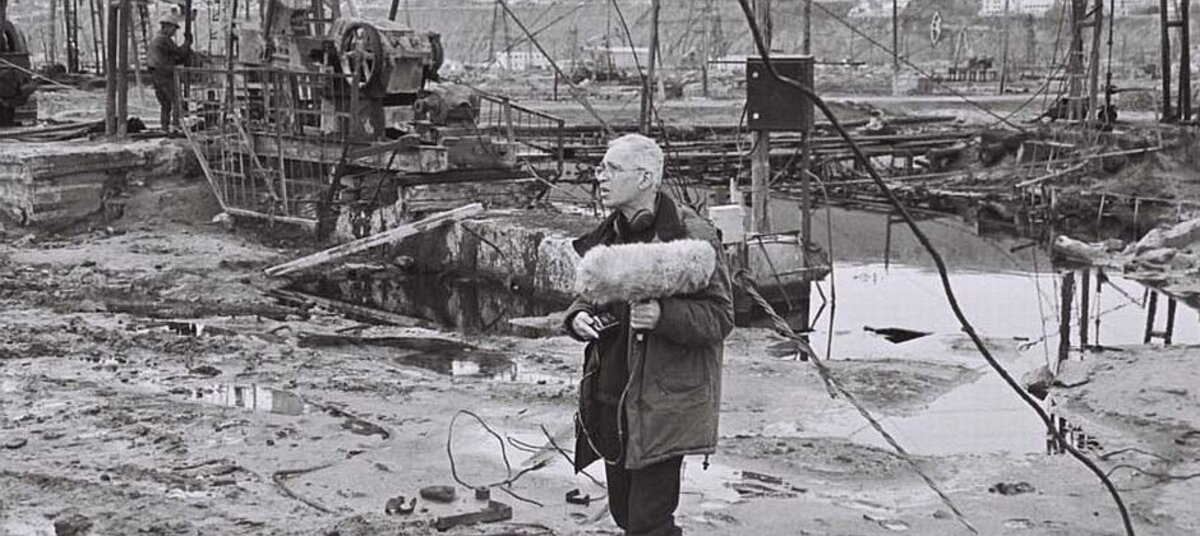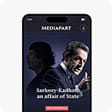FIELD RECORDING AS SONIC JOURNALISM

Agrandissement : Illustration 1

One of the most stunning field recordings of the past decade is Starry Night by Mazen Kerbaj.1 Mazen is Lebanese and lives in Beirut. He describes the recording as, ‘a minimalistic improvisation by: mazen kerbaj/trumpet, the israeli air force/bombs’. It documents the sounds on the balcony of his flat on the night of 15/16th of July 2006 during Israel’s summer war against Hezbollah in Lebanon. The recording starts with small breathy sounds made on the trumpet. They are quiet, but seem very close. One listens attentively. Suddenly an explosion shatters the stillness. The sound instantly lights up the city as it reverberates off buildings and hillsides briefly revealing the panorama, as would a lightening flash. Simultaneously the blast triggers car alarms and sets dogs barking pin-pointing their positions near and far before they fade to a tense quiet waiting for the next bomb to fall. It is one of those rare recordings where sound exhibits the same power of illumination as light. Throughout, Mazen continues to play minimal trumpet, quietly creative against the violence. His recording not only documents the events taking place, but is an act of imaginative defiance in its own right. For a listener the impact is powerful. The perspective reveals the city’s geography, a major aspect of its current political context and a very personal response to the situation. It is the dramatic conjunction of these elements within a single recording that makes it so memorable.
Of course this is a unique recording made in wartime. Most recordists’ subject matter is far more normal and everyday. But the power and layered elements of this recording vividly convey the situation. It is a graphic example of ‘sonic journalism’, journalism of and for the ear—the sound equivalent of photojournalism.
What is sonic journalism? In radio news, current affaires and sound documentary, as on TV despite the significance of images, the dominance of speech—spoken reportage, interviews, commentary, discussion—is unquestioned. Sonic journalism is based on the idea that all sound, including non–speech, gives information about places and events and that listening provides valuable insights different from, but complimentary to, visual images and language. This does not exclude speech but redresses the balance towards the relevance of other sounds. In practice field recordings become the means to achieve this. Recordings can, of course, be used in many ways. In my view sonic journalism occurs when field recordings are allowed adequate space and time to be heard in their own right, when the focus is on their original factual and emotional content, and when they are valued for what they are rather than as source material for further work as is often the case in sound art or music. Sonic journalism can be specifically created or can refer to these qualities in recordings originally made for o her purposes, such as Starry Night.
What do field recordings offer in this context? Most obviously they give basic information about places and events by virtue of the sounds, and their sources, we identify. Language and visual images also give such information. Indeed it is arguable they do so rather more explicitly than sound. The interpretation of sound certainly benefits from a knowledge of context in the same way that captions and titles enhance photographs. However field recordings convey far more than basic facts. Spectacular or not, they also transmit a powerful sense of spatiality, atmosphere and timing. This applies even when the technical quality is poor. These factors are key to our perception of place and movement and so add substantially to our understanding of events and issues. They give a compelling impression of what it might actually be like to be there. Sound is our prime sense of all–around spatiality and listening gives us a point of ear. It enables us judge how far we are from the events and to ask how we might feel and react in the circumstances. Certainly, with recordings and broadcasts we know we are not there, but even at this reduced level there is a subjective engagement and intuititive understanding that, in my view, are field recordings’ special strength. Such elements allow sonic journalism a significant impact qualitatively different from visual images or language.
Of course the news media already makes use of field recordings (probably referred to as location recordings). Indeed there has been a noticeable increase recently, particularly on BBC radio. But it is almost always as a ‘sound effect’—a burst of gunfire from Afghanistan, a snatch of national anthem on a royal visit, a line of protest song in an Arab square (all heard BBC Radio 4/World Service, May 17th 2011). They add a touch of actuality, but rarely last more than a few seconds before being faded down for the ever dominant speaking voice. Field recording’s power of atmosphere, spatiality and timing are hardly acknowledged. This is a pity, as crews sent to news hot spots are uniquely placed to capture such material and it is our loss that they are so rarely broadcast. Very occasionally though one does get through. An especially poignant example occurs 18 minutes into Jon Snow’s Tsunami Diary from Japan, 16 March 2011 (Channel 4 News).2 Amid the tsunami wreckage, amazingly, one loudspeaker from a devastated town’s public address system still works. It is playing the 5pm music that marks the end of the school day. Despite the blandest of electronic arrangements the tune is easily recognisable. It is Yesterday—Paul McCartney’s best known song of lost love and shattered dreams—here a quite surreal, and moving, comment on the destruction we see before us. Sound art, as well as sonic journalism, can learn from this clip. Field recordist Chris di Laurenti has regularly covered news events from a sonic perspective in what he calls ‘protest symphonies’, for example his Live in New York at the Republican National Convention Protest September 2–August 28, 2004 and N30: Live at the WTO.
These examples are sonic journalism for the listener. Equally important are the advantages for investigators. Sounds are very potent triggers for research. Attentive listening on location can reveal sonic threads running through the narratives and issues under examination and suggest unexpected questions and directions to be followed.
Visiting Chernobyl in May 2006 for the Sounds from dangerous places project, my first recording inside the exclusion zone was a surprise. Our driver had stopped for a cigarette and immediately I heard the fizz and pop of electricity. We had parked beside a pylon and above the cables were crackling with use. A chaffinch sang nearby and wind blew through the pines. It was an ear catching combination so I switched on the recorder. However the sound raised a question. All Chernobyl’s reactors had shut down so where was this electricity coming from and what was it for? Later our guide explained that Chernobyl still requires large amounts of power to maintain the reactors even in their shut down state, to continue the unfinished clean-up operations and to support the thousands of people who continue to live and work in the zone. The sound recorded was electricity flowing in the wrong direction, into Chernobyl rather than out, a sonic manifestation of the massive drain on Ukraine’s resources that Chernobyl has become.
Further research led to more information about Chernobyl’s never ending clean–up and, more widely, on what happens when a nuclear reactor’s lifespan ends. A reactor cannot just be switched off. Even if decommissioned without incident and the nuclear core removed, decades must pass before the buildings and immediate area are radiologically safe. Maintenance and security are essential for the entire period. Chernobyl’s exploded reactor 4 cannot be decommissioned. What remains of the melted core lies under tons of aging and cracking concrete. Repairs are constant and a long-term solution is increasingly urgent. A massive new containment structure has been proposed, but international arguments over the huge cost are unresolved. Researching this has taken time but hearing that unexpected fizz of electricity was the essential start. It is still a key memory when I’m reminded of these issues. Following sonic threads became a particularly effective research method at Chernobyl. Another led to the significance of the region’s rich folklore in trying to appreciate the disaster’s impact on rural people—the vast majority of those affected.
As I write—April/May 2011, Chernobyl’s 25th anniversary—the latest nuclear disaster is unfolding at Fukushima, Japan. Nobody knows how it will turn out, but the reactors no longer produce electricity. Like Chernobyl, there will now be Japanese pylons crackling as electricity flows the wrong way into the stricken Fukushima plant rather than away from it.
The arguments for the recognition of sonic journalism as a specific discipline are not intended to downplay any other medium. Far from it. Our senses and the media that address them cover different areas of perception. We gain a much fuller picture when they are in proper balance. Sound on its own is as incomplete as visual images and language on their own. Sonic journalism makes the case for sound to contribute on an equal basis and to its strengths. How and in what forms might this happen? Mainstream radio and TV will probably be slow to innovate in this area. They anyway may not be the best means, as, aside from their own inertia, we, the audience, are equally fixed in our interpretation of them. For me the new possibilities are likely to come from new and mobile media, particularly as they bring potentially relevant technologies such as GPS, mapping, instant communications and the ability to experience virtual and real space simultaneously into contention.
Peter Cusack



